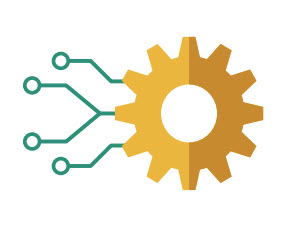Summer Student Loan Tips for New Law School Grads
 If you’ve recently graduated from law school, the last thing you want to think about right now is your student loan debt. Chances are, you’ve had your plate full with bar exam prep, or you’re taking a much-deserved break from thinking, period.
If you’ve recently graduated from law school, the last thing you want to think about right now is your student loan debt. Chances are, you’ve had your plate full with bar exam prep, or you’re taking a much-deserved break from thinking, period.
Unfortunately, ignoring your debt isn’t going to make it go away – and in fact it can have the opposite effect, making loans more expensive and take longer to pay off. If you take a few simple steps now, you can set yourself up for success and potentially save yourself some money along the way.
Before settling into your summer routine, here are four easy strategies for starting your loan repayment off on the right foot.

How To Maximize Productivity With Westlaw Precision With CoCounsel

- Become a hoarder.
With graduation comes a sudden flurry of communications from your loan servicer and your school’s financial aid office – which means you’re probably spending more time than you’d like staring at random emails, trying to discern what they mean and whether you will ever need this information again in the future. If you have a system for storing loan correspondence, you won’t have to waste time asking yourself that question every time. Create a folder on your desktop, throw all things loan-related into it, and say hello to inbox zero.
- Pause before saying grace.
As heavenly as it sounds to keep loan payments at bay for another few months, it’s important to remember that the student loan grace period doesn’t come cheap. In most cases, interest continues to accrue and is capitalized, or added to your loan’s principal, when repayment begins – which means you’re now paying interest on that new, higher loan balance. If you can make at least interest-only payments during the grace period, you’ll save yourself some cash in the long run.
Sponsored

How To Maximize Productivity With Westlaw Precision With CoCounsel


Attention Buyer: Not All Legal AI Models Are Created Equal

New Report - Are Small Firms Achieving Their Legal Tech Goals?

New Report - Are Small Firms Achieving Their Legal Tech Goals?
- Find free money.
Most lenders will give you a small interest rate deduction when you sign up for automatic payments. As a bonus, you’ll never have to worry about accidentally paying late (which can hurt your credit).
- Remember your refi options.
Refinancing is a popular strategy for borrowers who have high interest rate loans, and law school grads tend to fit squarely in that camp – whether they recently graduated or finished law school years ago. With historical rates on unsubsidized and Grad PLUS loans ranging between 4.66 and 8.5 over the past several years, it can be possible to get a lower rate through refinancing with a private lender.(1)
Refinancing has several potential benefits, like lowering your monthly payments or shortening your payment term, and you’ll save money on total interest. You can also consolidate multiple loans together through refinancing, simplifying your life with one monthly bill and payment.
Sponsored

Mitigating M&A Cyber Risk: Pre- & Post-Acquisition Due Diligence

The Ethical use of Generative AI

Want to learn more about refinancing? Check out SoFi, a leading marketplace lender and the largest provider of student loan refinancing. The average SoFi borrower saves around $14,000(2) and enjoys other benefits like personalized career consulting and job search assistance.
Learn more and check your rate today at www.SoFi.com.
(1) Note that refinancing federal student loans with a private lender can result in the loss of certain federal loan benefits, including potential forgiveness for certain professions, graduated, extended and income-driven repayment programs, and loan deferment and forebearance (although some private lenders so offer the latter). If you plan to use any of these benefits, you should think twice before refinancing federal student loans.
(2) Average savings calculation is based on all SoFi borrowers who refinanced between 2/1/15 and 4/30/15. Prior to refinancing, borrowers taking 5 and 10-year terms had an average balance of $71,128 and lifetime payment of $101,300 at a rate of 6.77%, and borrowers taking 15 and 20-year terms had an average balance of $98,983 and lifetime payment of $157,936 at a rate of 6.96%. After refinancing, 5 and 10-year borrowers have an average lifetime payment of $85,197, and 15 and 20-year borrowers have an average lifetime payment of $148,036, based on a weighted average of new rates received across both types (fixed and variable) and respective loan terms with AutoPay. Savings calculation assumes no change in interest rates, on-time payments, and no prepayment of loans. Borrowers refinancing loans into longer terms typically forfeit savings for lower monthly payments.







